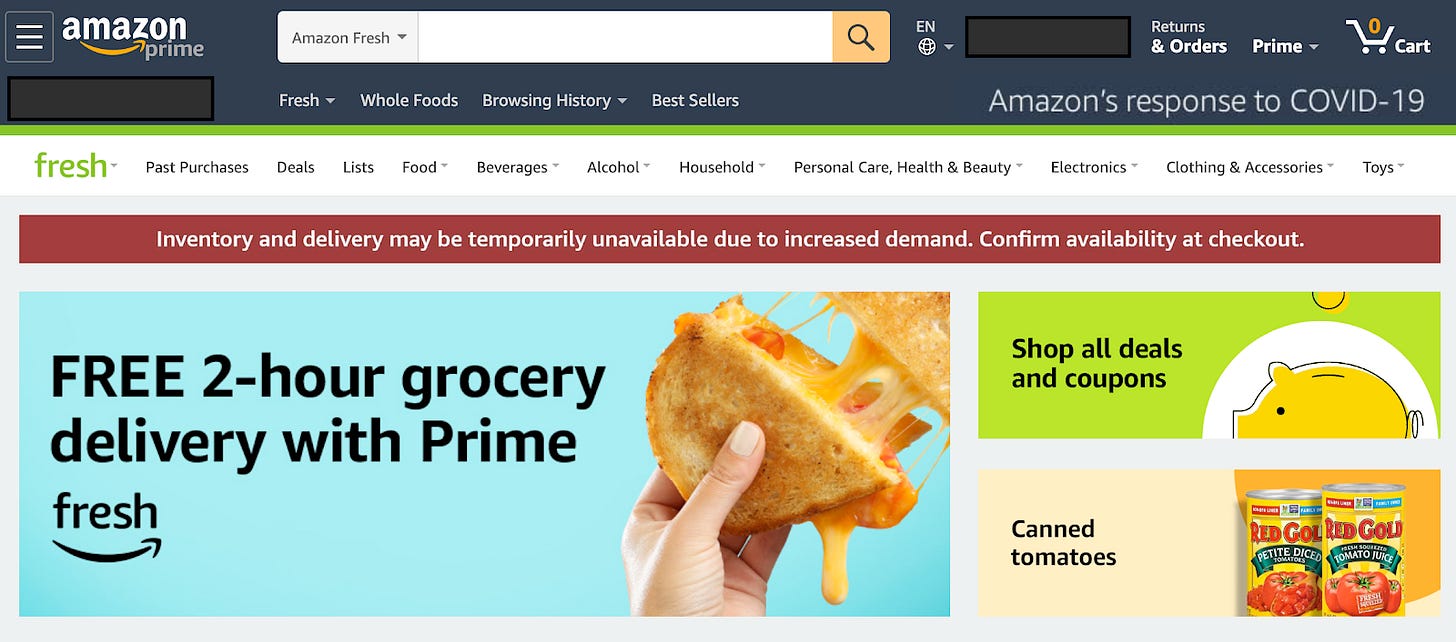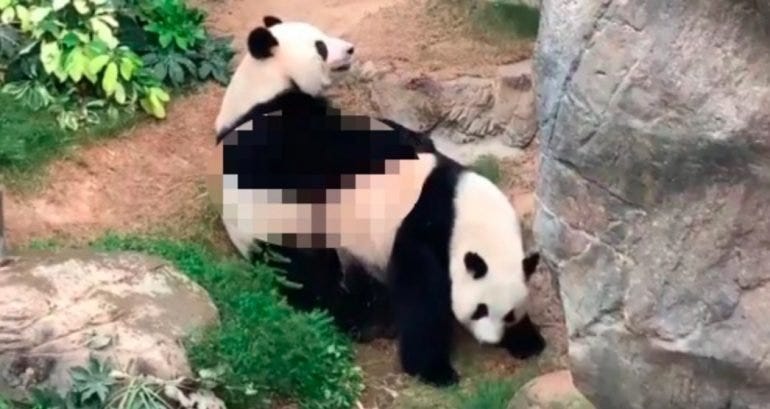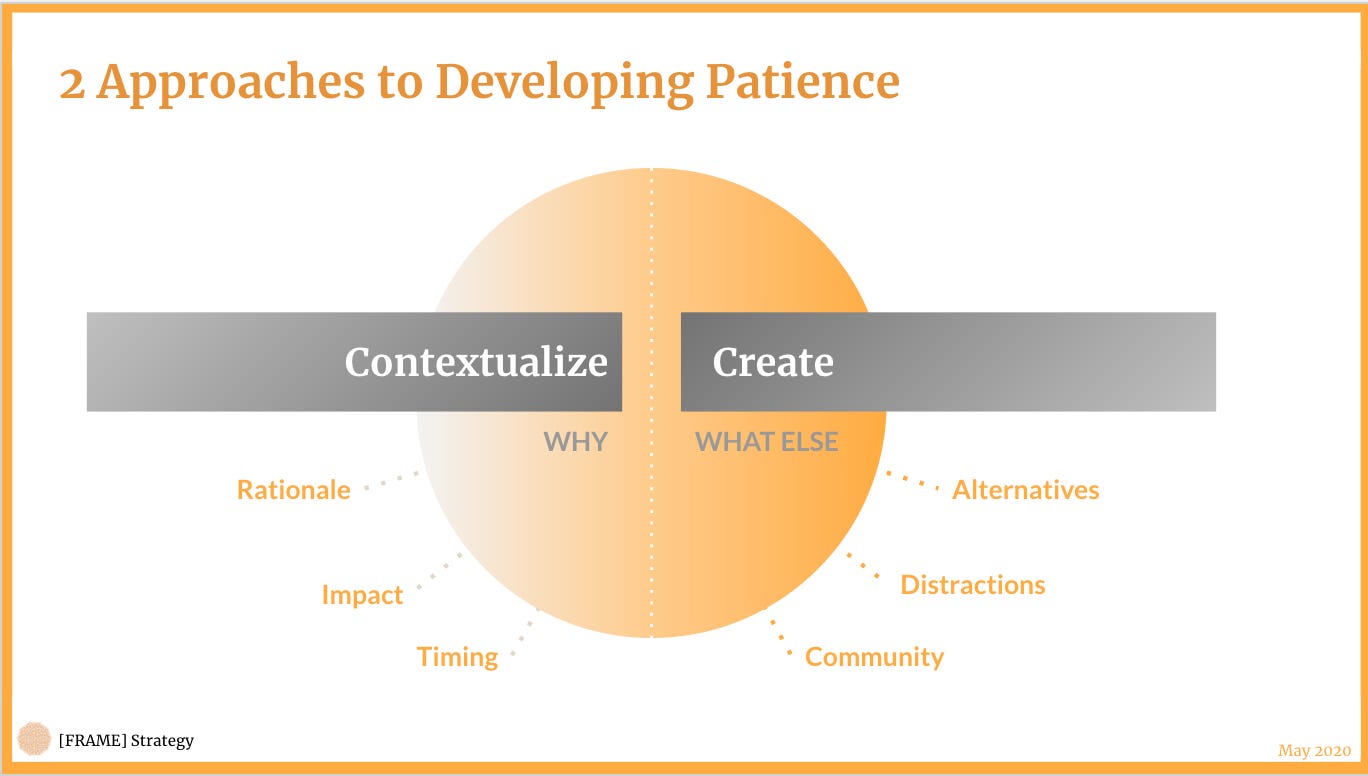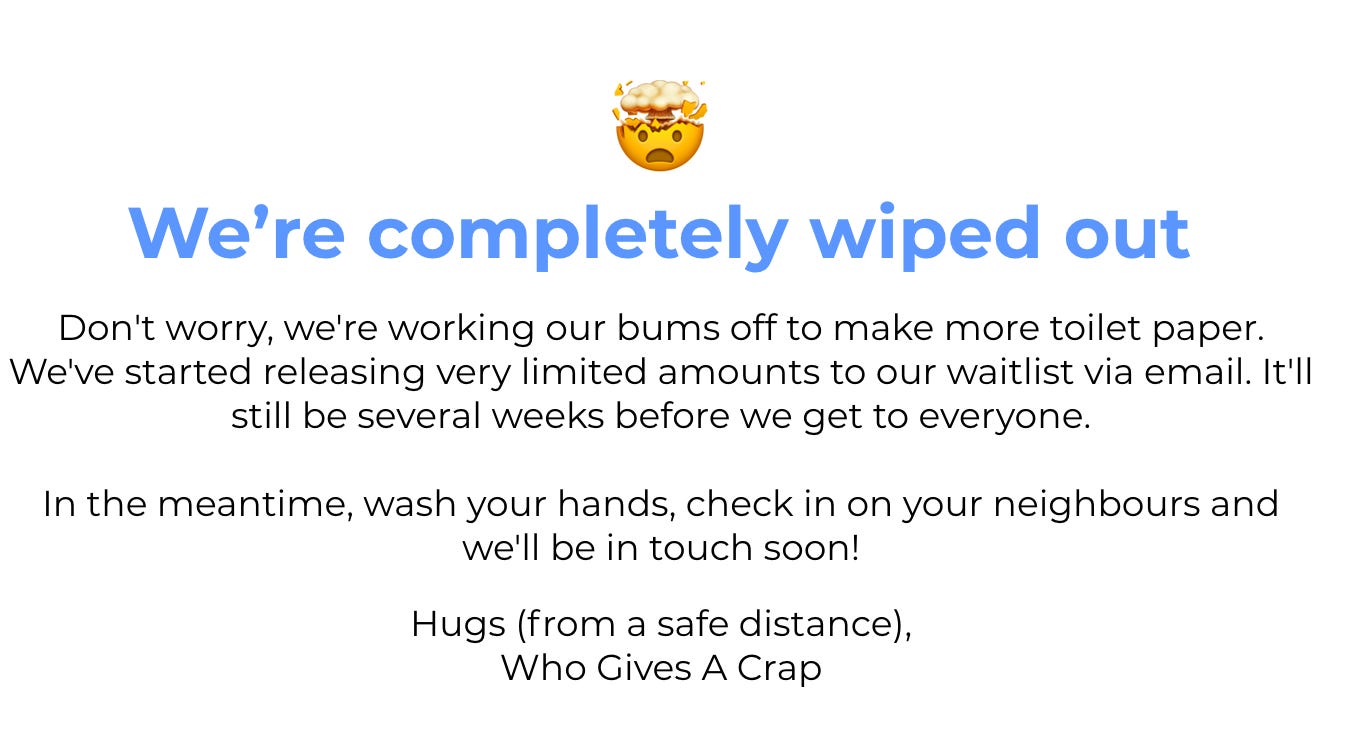Patience in the Time of Coronavirus
How Pandas and Matchsticks Can Teach Us Patience for Future Challenges
The Quarantine Series
This is one of a series of articles about the lessons we can learn as individuals and companies as we move through times of disaster. Read more & sign up for the newsletter here.
Early in the quarantine, I kicked off a project: I was going to upholster a stool. I wanted to work with my hands, a creative urge that has driven a flour shortage by new bakers, runs on Home Depot, and other unpredicted effects of a pandemic. I’d never upholstered before in my life, so I spent a few days ingesting articles and videos, getting my list of materials together, and envisioning my perfectly finished project.
And then I hit a glitch.
I had to find upholstery glue, a spray adhesive specifically made for foam and fabric. Usually, this would mean a quick drive to a crafts store, quizzing the salesperson, comparing products, and getting the best one for the best price in one afternoon. But in the precarious early days of quarantine, I didn’t want to risk a craft store visit, and sorting through confusing information online made me put off the purchase for days. When I finally committed to a product and hit the buy button., I didn’t realize that the product would take a long time to get to me--now going on four weeks.
The gratification of completing my project hinges on a month-long delivery window in which my little spray can of glue travels from supplier to warehouse to delivery via plane, train or truck before it lands on my doorstep, and each step of the way got a whole lot more complicated with the coronavirus.
Instant Gratification.
Until the pandemic hit, Amazon had been working tirelessly to shave its delivery time from two days to one day. No longer would Prime customers have to wait an excruciating 48 hours for the items their heart desired. In some markets, Amazon delivers the same day, the window of time between our urge and our satisfaction shrinking to 0.

When the pandemic hit, all of a sudden consumers trained at the teat of instant commerce had to shift their expectations. Amazon sprouted a banner on its homepage that warned of delivery delays. Suddenly we lined up for hours to get into grocery stores. Online orders took weeks instead of days. And toilet paper? Forget about it. DTC toilet paper brands like Who Gives A Crap and Reel ran out of their supply instantly, and the waitlist to get a roll was a month long.
Patience.
The radical patience that has been displayed by the typically impatient American culture is surprising. If you had asked people in February whether they would wait in line to go into a grocery store, the answer would have been a definitive scoff. Although we’re seeing rowdy protests against the quarantine, many places have experienced orderly waiting, respectful spacing, and patient behavior.
The cultivation of patience in this landscape takes cognitive empathy, an understanding of the suffering of others and a recognition of the impact of our actions. When you can assess a situation and understand how your actions can ripples through a system, like we have been doing with the coronavirus, it becomes easier to suspend your own needs for a community’s needs.
As we start to train our gaze on the slow re-opening of the economy, the consumer has also changed. More reliant than ever on delivery and more comfortable in the routines of home life, but also, perhaps, more cognizant of the systems that shaped our impatient expectations.
So will we emerge more patient and aware?
Companies are betting on no. Target bought a same-day delivery company, and other start-ups continue to compete to move things more and more quickly.
And although we’re more aware of the impact on people up and down the supply chain, consumers don’t always act in the interest of others. Recent strikes from frontline workers at Amazon and other delivery services have gotten plenty of media attention, but haven't had reported impact on sales.
As protests ramp up against the quarantine in places around the US, the patience that seemed the hallmark of early days seems to be wearing thin. But we need to build patience, not just for the ongoing pandemic and the predicted resurgence, but for the challenges of the future.
How can we leverage patience for future challenges?
As doors begin to open, the world will continue to grapple with the pandemic. But if we look to history, the devastating 1918 flu preceded the Roaring Twenties, a raucous time of consumption. At some point in the next few years, the pandemic will be in the rear view mirror.
On the heels of this pandemic, we’re facing the ongoing impact of climate change, inequality, and other large scale challenges that will require the same level of global commitment to mitigate. As eager as people are to “get back to normal,” the learning that we need to take away is that the world can work together to take action.
We’ve seen the impact of this global shut-down on the environment. A 17% drop in carbon emissions. Better air quality, especially in cities. As streets empty, wildlife finds its way back into cities. Pandas in captivity, notoriously shy of breeding, have sex after a 10 year dry spell.

NSFW Image courtesy of Next Shark
Many of these circumstantial environmental responses have been celebrated on social media, and demonstrate to us that a shift in lifestyle--slower, less mobile, less consumption-driven--can have a major impact.
But we didn’t set out to address climate change. We set out to stop a virus. So at the same time, we’re increasing the amount of single-use plastics, delivery and boxes. Recycling facilities are closed to protect workers and all that material finds its way into landfills.
In order to solve the knotted problems of the future, we’ll need to focus on the behaviors we’re learning today, as well as apply the same power of the collective to learn and unlearn other behaviors. It will take patience.
Patience is an outdated virtue. It is not in the nature of capitalism. We’re impatient to progress and grow. And yet, as we think about the magnitude of challenges we’re facing and will continue to face, we’ll need to valorize patience again.
Companies like Patagonia through their Don’t Buy This campaign and REI through their Opt Outside campaign have long been asking us to slow down our consumption for the sake of the environment. In the wake of quarantine, Facebook and Twitter have announced ongoing work from home policies, potentially reducing the carbon impact of commuting and high capacity office spaces. We’ll need more companies to commit to a different way of doing things, and that will take patience to get it right.
Two approaches to inspiring patience.

CONTEXTUALIZE.
The news has been dominated by the pandemic for months, drowning out the Presidential election and other news that would typically be in our headlines. It’s impossible to ignore the context of the coronavirus. But framing the context is key to shaping reactions.
Provide Rationale.
The disruption of warehousing, meat plants, and shipping has reminded us of the large and fragile machine that has made our world run, and is the rationale behind many delays. As I’ve been focusing my funds on supporting small businesses, who are at the mercy of supply chains and delivery services that they don’t manage, I’ve received a fair share of explanations behind delivery delays. What strikes me is that it’s often from a business owner or employee, not a nameless notification system.
Demonstrate Impact.
Showing the impact of our behavior can convince people to change. An LA-based artist made a video with a simple visual demonstrating how social distancing can have an impact, and the video blew up.
Conversely, in its quest for same day delivery, Amazon nixed even the option for consumers to choose a more environmentally friendly delivery window because it feared that it would make them second guess their purchase. It robbed consumers of understanding the impact of their actions on climate changes by making the externalities of their actions invisible.
Be Clear About Timing.
Ok, so no one has the crystal ball to assess when we’ll be through the pandemic. But providing clarity in terms of timing can give the impatient a sense of calm. Future problems don’t have a timeline attached either. Every few years that we do little, the dangers of climate change inch closer. But everything from a basic setting of expectations, like this ad from the afore-mentioned toilet paper company Who Gives A Crap, to horizons of determining when to phase out carbon, helps prepare people and reduces anxiety.

The simple addition of timing can go far to calm the impatient. No one is more impatient than a New Yorker waiting for a delayed train, and in 2016, the MTA started installing countdown clocks to assuage the nerves of riders, based on a study that showed the impact of a simple timing on people’s anxiety.
CREATE.
Creativity is required to build a different path forward, and in terms of creating space for people to be patient it’s no different.
Provide Distraction.
As every parent knows, distracting from an upset is a huge help. In lieu of working and shopping, Animal Crossing’s adorable capitalism has skyrocketed, the perfect sense of control during an unpredictable crisis. As Rohit Thawani writes in The Guardian,
“From morning to night. Animal Crossing is your escape from the darkness of the real world...The island you control is your reward for finishing that work video call.”
While the world’s sports fans sit on the sidelines waiting for their beloved teams to emerge from quarantine, The Last Dance, a documentary series about Michael Jordan, is making streaming history.
Develop Alternatives.
We’ve sought to replace our beloved IRL activities with approximations and alternatives. Virtual racing has also taken off, and sportscasters are lending their voices to narrate daily life. Nike has celebrated people exercising at home, and Peloton has made a remarkable recovery from their December advertising debacle as more people seek to exercise at home.
Build Community.
Countless brands have told us ‘we’re all in this together,’ but few have acted on it. One way brands build community is through live streaming: Global Citizen turned its usual summer concert to raise money into a national televised appointment viewing event, and the yoga studio around the corner keeps the yoga flowing through Zoom classes. Apparel brand Chinatown Market has shifted fully to online, building community through online classes and events. But the strongest communities I’ve experienced have been homespun: college friends setting up regular Zoom drinks, a global community of strategists meeting for lunch, friends from a retreat checking in weekly.
I learned about the Chinatown Market case from LA-based digital strategist Sara Wilson, who launched The Digital Campfire Download, a weekly interview series where she speaks to the creatives and entrepreneurs behind online communities, including those that have sprung up in the last month or so in response to the pandemic. She says,
“Practically overnight, staying connected with our community became a necessity, rather than a nice-to-have, help-us-stay informed-and-entertained option. Suddenly, everyone from our extended families to our local yoga studios to the Pope launched a campfire.”
When it comes to other challenges like climate change, we need to understand what behaviors we need to shift and how to create better paths forward. To do this, we’ll need to extend the patience we’ve been giving the coronavirus.
Some reads for the patient among you:
A long read on cultural evolution, collectivist societies, and COVID on the LSE blog.
I’m rewatching Breaking Bad and just enjoyed the slowest and simplest episode that revolves around catching a fly.
On impatience during the 1918 Spanish flu and quarantine
Coming up next…Scarcity in the Time of Corona. Sign up here to get the next newsletter.



